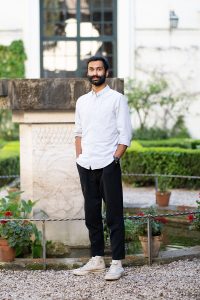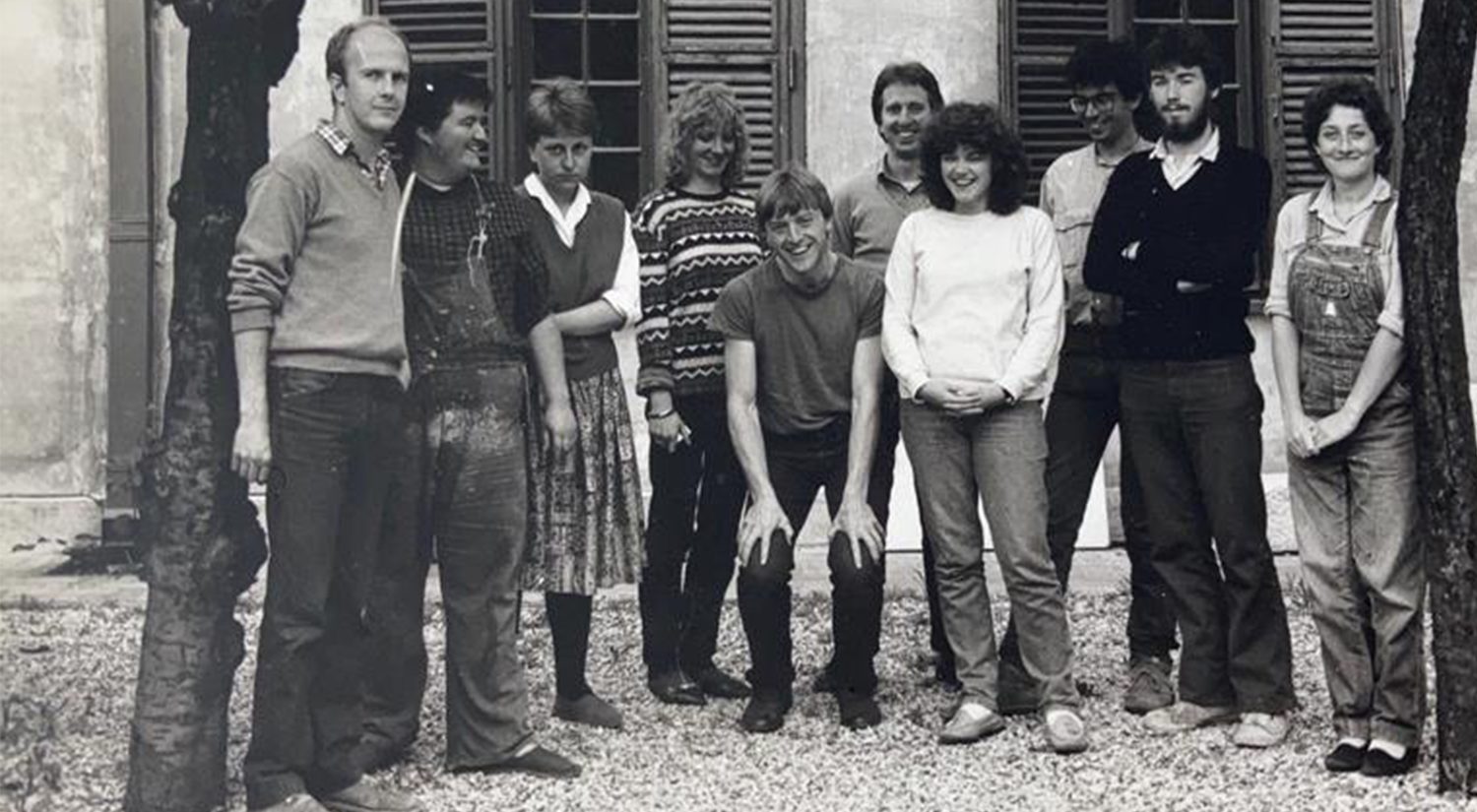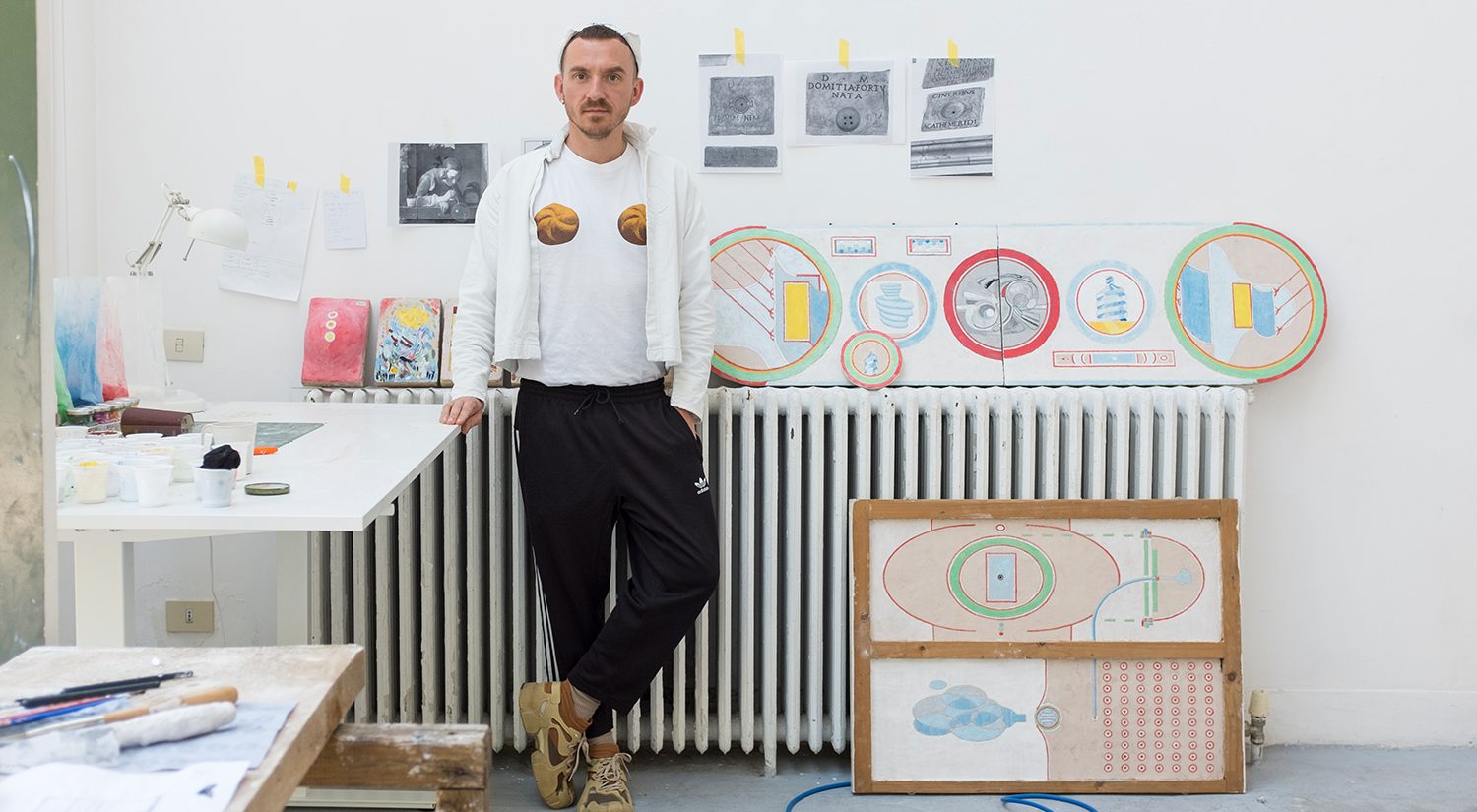Samuel Agbamu is a current Rome Award holder at the BSR and a Leverhulme Early Career Fellow in Classics at Royal Holloway, University of London. He is currently in Rome conducting the project Restorations of empire in Africa: ancient Rome and modern Italy’s African colonies.
This blog post provides an insight into the research he is conducting at the BSR, most notably in response to a workshop that he led at the school very recently.
Recent decades have seen the legacies of colonialism come under increasing scrutiny. In conjunction with the global movement for Black Lives, such discussions have shone a light on the continuing effects of colonialism and racism on societies across the world. A tangible expression of the persistence of colonialism is seen in the monumentality of former imperial capitals. Rome is an intriguing example of this. Until fairly recently, modern Italy’s colonies in Africa and the Aegean had been closely associated with Italy’s Fascist period, which ran from 1922 to 1943. However, Italy gained its first colonies in Africa soon after national unification, several decades before Mussolini’s 1922 March on Rome, and retained possession of a sliver of its East African colony for several years after Mussolini’s deposition. Mussolini exploited the links between Italian imperialism and the ancient Roman Empire, a link facilitated by the history of Roman imperialism in regions colonised by Italy, particularly in North Africa. Yet this was not an innovation of Fascism but had precedent in the rhetoric and practice of liberal Italian imperialism, and indeed in the imperialisms of other European nations. The parallels with ancient Rome drawn by liberal and Fascist Italian imperialism saw the urban landscape of Rome being reshaped by this backwards looking imperial ideology. From looting antiquities from its colonies to adorn the city, to showcasing the ancient imperial heritage of Rome, the Italian empire of the nineteenth and twentieth centuries has left an indelible mark on the city that we encounter today. This is a vibrant area of scholarship that was the subject of a lively and thought-provoking conference held in May 2022 by the Deutsches Historisches Institut in Rom, hosted at the Goethe Institut.
Seeking to capitalise on the groundswell of discussion, I ran a workshop at the British School at Rome on these dual legacies of ancient and modern imperialism in the city of Rome, a topic related to the research I am conducting in Rome. The BSR proved to be a perfect venue for such a discussion. By drawing on the diverse specialisms and practices of the scholars, artists, and architects resident at the school, a well-rounded discussion expanded my rather myopic, classicist’s view of the theme. In addition, the School played an important role in Italian imperialism’s ambition to resurrect Rome’s empire. For example, the BSR was involved in the planning for both the 1911 Mostra Archeologica held in the Baths of Diocletian in Rome, centred on Rome’s overseas provinces and staged in the same year as Italy’s invasion of Libya, as well as the 1938 Mostra Augustea, an exhibition in celebration of the bimillenary of Augustus which posed Augustus as a proto-Fascist and predecessor of Mussolini. As well as this, the deputy director of the BSR between 1909 and 1925, Eugenie Strong, was in close correspondence with many of the classical scholars who were central to the promotion of Roman studies within the context of the city’s imperial revival.
The aim of the workshop was to facilitate discussion around responses to the imperial legacy of the cityscape of Rome. Intimately related to this issue is how to respond to the fact that urban planners, architects, and ideologues working under Fascism played a huge role in shaping the city of Rome as we encounter it today, as explained by scholars such as Aristotle Kallis, Flavia Marcello, and Federico Caprotti among others. Discussion was framed around some guiding questions: how do our fields of research, artistic practice, or personal contexts inform our response to sites and monuments of modern Italian imperial emulation of the Roman Empire? and what productive approaches might there be to such sites and monuments?
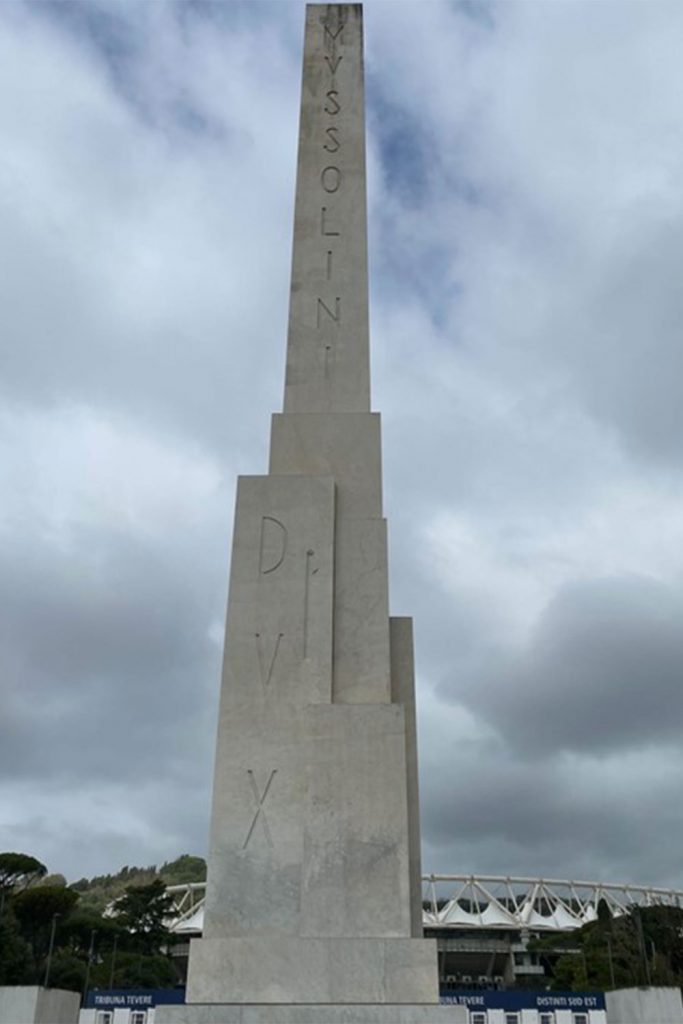
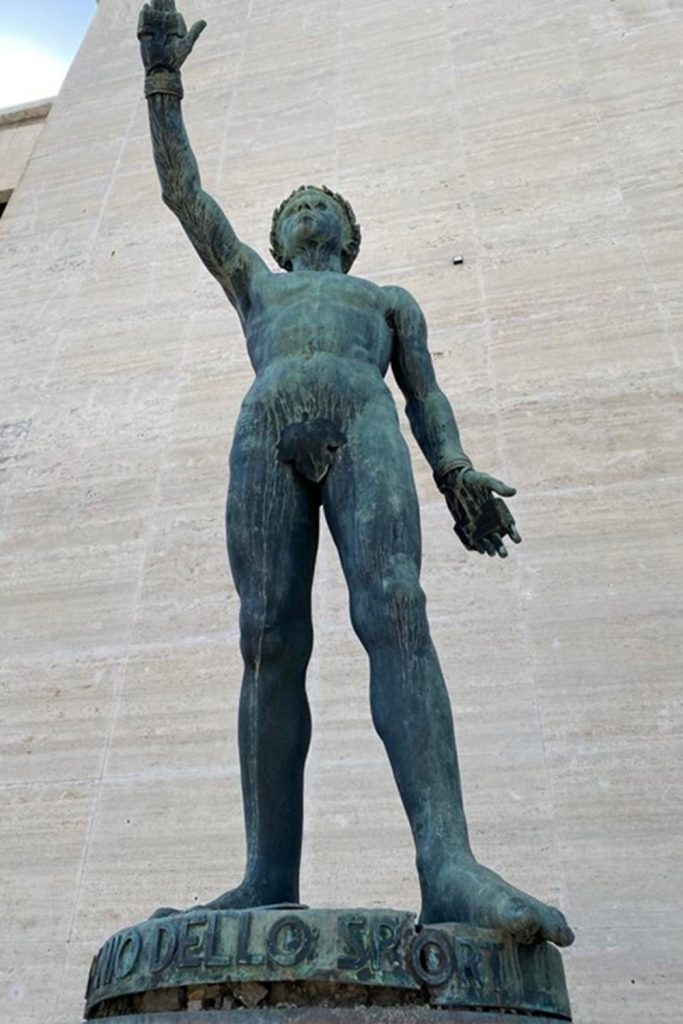
Should, for example, the Mussolini Obelisk (pictured) of the Foro Italico, underneath which is a Latin codex narrating Fascism’s first decade in power, translated into English recently by Han Lamers and Bettina Reitz-Joosse, simply remain as it is, a celebratory monument of Fascist triumphalism, complete with its self-narration, there to be rediscovered and read at some distant point in the future? Should such monuments be reframed, as seen in the case of the ‘Genius of Sport’ (also pictured) a statue in Rome’s Eur district? This statue, formerly known as the ‘Genius of Fascism’, with arm aloft in a Roman salute, was renamed and had boxing hand-wraps added for the 1960 Olympics in Rome (my thanks to Ilyas Azouzi for the detail of the boxing wraps). Or should such relics of imperialism and fascism be contextualised either in situ or in a museum, in which case who would be doing the contextualisation and for whom? Can the ideology encoded by such monuments be subverted, or is the best approach simply to destroy them? Needless to say, no clear answers were arrived at by the end of the workshop. This is not, of course, to say that we should not continue to ask these questions and to interrogate the colonial and nationalist foundations of former imperial cities.
My sincere thanks to the British School at Rome for hosting the workshop and to the participants for their fascinating contribution.
